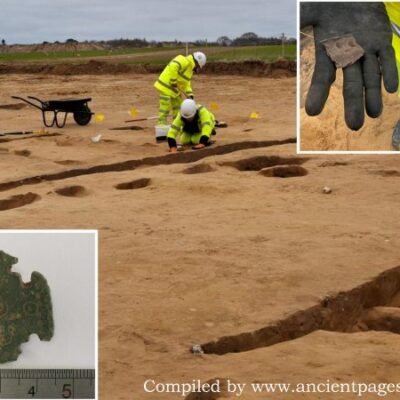Conny Waters – AncientPages.com – Antique swords from the pre-colonial West African kingdom of Dahomey are distinguished by their unique aesthetic qualities. However, these masterpieces also contain numerous design elements influenced by European, Islamic, and other sword-making traditions.
Dating from the early 17th to the late 19th century, the kingdom of Dahomey was situated on the coast of West Africa, on a stretch of coastline known as the Bight of Benin. Map provided by James Flexner of the University of Sydney.
In this study, ANSTO researchers from the Australian Centre for Neutron Scattering who were members of an inter-disciplinary team led by the University of Sydney, sought to scientifically discover whether Dahomean swords were domestically produced or imported.
A team including historical archaeologists and neutron scientists examined six 19th-century Dahomean swords using a non-invasive multi-methodological approach could conduct full pattern analysis of the objects and reveal the composition and manufacturing history of the iron implements in these ancient African swords.
Additionally, they could focus on the swords associated with Dahomey’s unique female fighting force. The swords are linked to Dahomey’s unique female fighting force, continuing today with women soldiers and palace guards.
Normal (xy) and longitudinal (xz) tomographic reconstructed cross-sections of (a) sword 1, (b) sword 2, (c) sword 3, (d) sword 4, (e) sword 5, (f) sword 6, (g) sword 7. The dotted red line indicates the location of the xy section along the blade. A scale bar indicates the correspondence between gray tone and neutron attenuation coefficient. Image source
The research sheds new light on African craftsmanship and technological sophistication of the swords, which were likely made from locally smelted iron. This fact seems contradict the assumptions of the few existing historical reports, regarding the swords.
Neutron tomography on the Dingo instrument, powder diffraction on the Wombat, and residual stress measurements on the Kowari confirmed the swords were made by African smiths, not imported from Europe.
The pores’ geometry, size, orientation, location, and connectivity type relate to the metal’s forging and welding. Three of the six swords, despite similar styles, differ in internal structure.
“Importantly, the combination of neutron tomography images and neutron diffraction analyses provide a wealth of new insights into the manufacture of African swords. In particular, it sheds new light on African craftsmanship and technological sophistication,” explained Dr Floriana Salvemini, an expert in historical metallurgy.
Swords 1 to 6 have been identified as 19th century Dahomean swords and sword 7 is a European cutlass or couteau de chasse dated to the second half of the 18th century. Image source
Analysis of five Dahomean blades revealed considerable variation in their manufacturing. Different practices and treatments led to distinct stress distributions in the metals.
Further, analysis showed a clear difference between the swords and three distinct groups can be isolated based on the phase composition, also suggesting different practices of metalworking.
The analysis didn’t clearly validate the metal provenance in Dahomey, but the composition suggests potential iron sources include Bassar (Togo), Sweden, the Ruhr Valley, or even Brazil (via slaves).
This scientifc examination of the swords showed that the swords were ritual objects, possibly linked to magico-religious rites and observances and local iron may have been preferred for these purposes.
The evidence suggests that all were masterfully manufactured by local smiths, half of them using a distinctive forging technique that appears to be Dahomean. This discovery possesses substantial implications for research concerning the kingdom and contributes meaningfully to the ongoing discourse regarding European iron imports, not only within Dahomey but also across the broader West African region.
Written by Conny Waters – AncientPages.com Staff Writer








